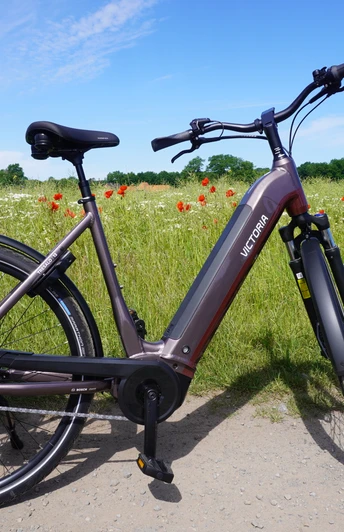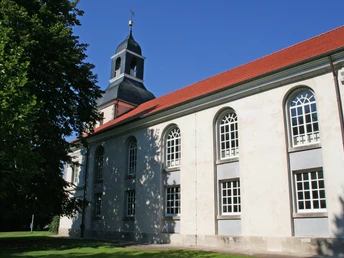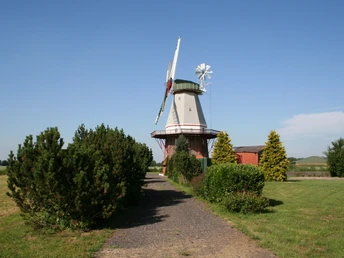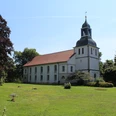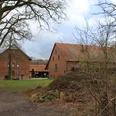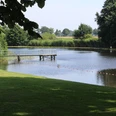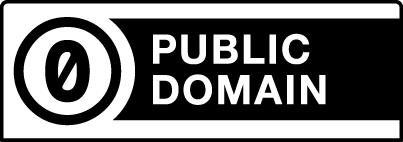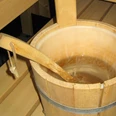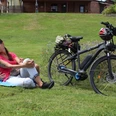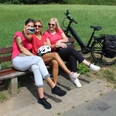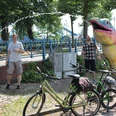- 1:55 h
- 30.66 km
- 7 m
- 15 m
- 8 m
- Start: Blender mill
- Destination: Blender mill
The approx. 33 km long, signposted circular trail through the municipality of Blender starts and ends at the Blender mill.
The mill, built in 1872, is a gallery mill that was shut down early on and fell into disrepair. From 1997, the mill was restored and finally handed over to the Blender Harvest and Mill Association in 2004. Since 2005, the mill has been an official branch of the Thedinghausen registry office.
Cross the road and drive along Blender Hauptstraße into the village of Blender. A little later, turn left into the street "Auf den Linteln" and you will come directly to the Blender church.
This is the seat of the parish office, under which the parishes of Blender, Intschede and Oiste are united. The current main building was erected in 1827. Three steel bells have been ringing above the tower hall since 1956. In the grounds outside, there are memorials to the victims of both world wars, as well as the Luther Stone, which was erected in 1917 to mark the 400th anniversary of the posting of the theses. The Furtwängler organ is the jewel in the crown of Blender church and is a listed building.
Drive past the church into Hackstraße and turn left at the end of the street into Mühlenberg and follow this road to Blender See. The lake is part of the old Weser bed and is a popular bathing spot and a nice resting place in summer. Turn left after the lake, past the Glockenkuhle and a historic boundary stone and follow the road until you reach the road "Am Zaaster". Continue straight ahead here, past another historic boundary stone.
These stones, dating from 1613, are two of a total of 33 stones that marked the border between the archbishopric of Bremen and the county of Hoya for many years. This border stretched from the Weser opposite Hutbergen to the Eyter near Hörsten (south of Schwarme). You can reach the Hesse family manor in Varste with its historic garden by turning left at the Mühlenwiese into the former Mühlenweg. There you will also find a boundary stone.
Continue along the road past interesting granaries and Lake Varste until you reach the church in Oiste.
The church in Oiste was first mentioned in a document in 1420. The current building was constructed in 1832. Next to the main entrance of the church are three children's gravestones from the 18th century, which are decorated with portraits of children.
Continue to the rest area on the L 203 and then turn left before the dyke towards Amedorf. In Reer, turn right onto "Osterfeldweg" and then continue in the direction of the Weser dyke until you reach "Intscheder Dorfstraße". On the right you will see the Weser weir with the Langwedel power station built in 1958. At the Flotten Weser landing stage, you can also continue your tour by boat in the direction of Bremen or Nienburg.
In Intschede, you reach the church in Intschede via the street "An der Aue". Right next to it is the Stöver farm with its delicious farmhouse ice cream.
Intschede has had its own church since 1120. The current building was erected in 1819 in the classicist style. The copper-covered roof of the tower, the red paint and the black slate of the roof give the impression of a farm church, which is further enhanced by the surrounding deciduous trees. The altarpiece is a copy of Leonardo da Vinci's famous Last Supper painting.
We then continue on to the "Browiede" restaurant, located directly on the Weser. From the former harbor pub of the water level observer Christoph Kelling, an approx. 2.5 km long walk leads through the former harbor basin on the Weser towards the Weser weir and past the Intschede farm ice cream back to the Browiede restaurant.
Through the beautiful Wesermarsch with a view of the Weser, you pass the historic Intschede sluice to Nottorf. Behind the dyke, turn left into the unpaved Lindweg and cycle past greenhouses to Wulmstorf to the Arndt's Meyer farm café on the L 203. In a sharp left-hand bend, turn right towards Hiddestorf and cycle past the half-timbered buildings with thatched roofs of the Waltring farm to Gahlstorf and then on to Holtum-Marsch to the Klinker family's Gerkenshof farm with its two-storey granary, which is well worth seeing. From there, take the "Heidstraße" past the wind turbines in the direction of Laake/Seestedt. If you now follow this road, you will find yourself back at Blender See after a while and return to the starting point at Blender Mühle via "Blender Hauptstraße" past the Mama Mia pizzeria and the Fu Thai restaurant.
You can also find the Blender tour at Komoot.
Safety information:
The mill, built in 1872, is a gallery mill that was shut down early on and fell into disrepair. From 1997, the mill was restored and finally handed over to the Blender Harvest and Mill Association in 2004. Since 2005, the mill has been an official branch of the Thedinghausen registry office.
Cross the road and drive along Blender Hauptstraße into the village of Blender. A little later, turn left into the street "Auf den Linteln" and you will come directly to the Blender church.
This is the seat of the parish office, under which the parishes of Blender, Intschede and Oiste are united. The current main building was erected in 1827. Three steel bells have been ringing above the tower hall since 1956. In the grounds outside, there are memorials to the victims of both world wars, as well as the Luther Stone, which was erected in 1917 to mark the 400th anniversary of the posting of the theses. The Furtwängler organ is the jewel in the crown of Blender church and is a listed building.
Drive past the church into Hackstraße and turn left at the end of the street into Mühlenberg and follow this road to Blender See. The lake is part of the old Weser bed and is a popular bathing spot and a nice resting place in summer. Turn left after the lake, past the Glockenkuhle and a historic boundary stone and follow the road until you reach the road "Am Zaaster". Continue straight ahead here, past another historic boundary stone.
These stones, dating from 1613, are two of a total of 33 stones that marked the border between the archbishopric of Bremen and the county of Hoya for many years. This border stretched from the Weser opposite Hutbergen to the Eyter near Hörsten (south of Schwarme). You can reach the Hesse family manor in Varste with its historic garden by turning left at the Mühlenwiese into the former Mühlenweg. There you will also find a boundary stone.
Continue along the road past interesting granaries and Lake Varste until you reach the church in Oiste.
The church in Oiste was first mentioned in a document in 1420. The current building was constructed in 1832. Next to the main entrance of the church are three children's gravestones from the 18th century, which are decorated with portraits of children.
Continue to the rest area on the L 203 and then turn left before the dyke towards Amedorf. In Reer, turn right onto "Osterfeldweg" and then continue in the direction of the Weser dyke until you reach "Intscheder Dorfstraße". On the right you will see the Weser weir with the Langwedel power station built in 1958. At the Flotten Weser landing stage, you can also continue your tour by boat in the direction of Bremen or Nienburg.
In Intschede, you reach the church in Intschede via the street "An der Aue". Right next to it is the Stöver farm with its delicious farmhouse ice cream.
Intschede has had its own church since 1120. The current building was erected in 1819 in the classicist style. The copper-covered roof of the tower, the red paint and the black slate of the roof give the impression of a farm church, which is further enhanced by the surrounding deciduous trees. The altarpiece is a copy of Leonardo da Vinci's famous Last Supper painting.
We then continue on to the "Browiede" restaurant, located directly on the Weser. From the former harbor pub of the water level observer Christoph Kelling, an approx. 2.5 km long walk leads through the former harbor basin on the Weser towards the Weser weir and past the Intschede farm ice cream back to the Browiede restaurant.
Through the beautiful Wesermarsch with a view of the Weser, you pass the historic Intschede sluice to Nottorf. Behind the dyke, turn left into the unpaved Lindweg and cycle past greenhouses to Wulmstorf to the Arndt's Meyer farm café on the L 203. In a sharp left-hand bend, turn right towards Hiddestorf and cycle past the half-timbered buildings with thatched roofs of the Waltring farm to Gahlstorf and then on to Holtum-Marsch to the Klinker family's Gerkenshof farm with its two-storey granary, which is well worth seeing. From there, take the "Heidstraße" past the wind turbines in the direction of Laake/Seestedt. If you now follow this road, you will find yourself back at Blender See after a while and return to the starting point at Blender Mühle via "Blender Hauptstraße" past the Mama Mia pizzeria and the Fu Thai restaurant.
You can also find the Blender tour at Komoot.
Safety information:
- Throughout the entire tour, please note that the cycle paths are used at your own risk
- No guarantee is given for the usability of the cycle paths
- In cities, increased attention is generally required
- Please use existing cycle paths
- On the tour, you must expect to encounter danger spots, such as bollards, circulation barriers
- .bollards, barriers and unsecured crossings of main roads - this advice applies in particular to cycling families with small children.
Waypoints
Start
Good to know
Best to visit
suitable
Depends on weather
Author
Mittelweser-Touristik GmbH
Lange Straße 18
31582 Nienburg/Weser
Organization
Mittelweser-Touristik GmbH
License (master data)
Mittelweser-Touristik GmbH
Nearby
